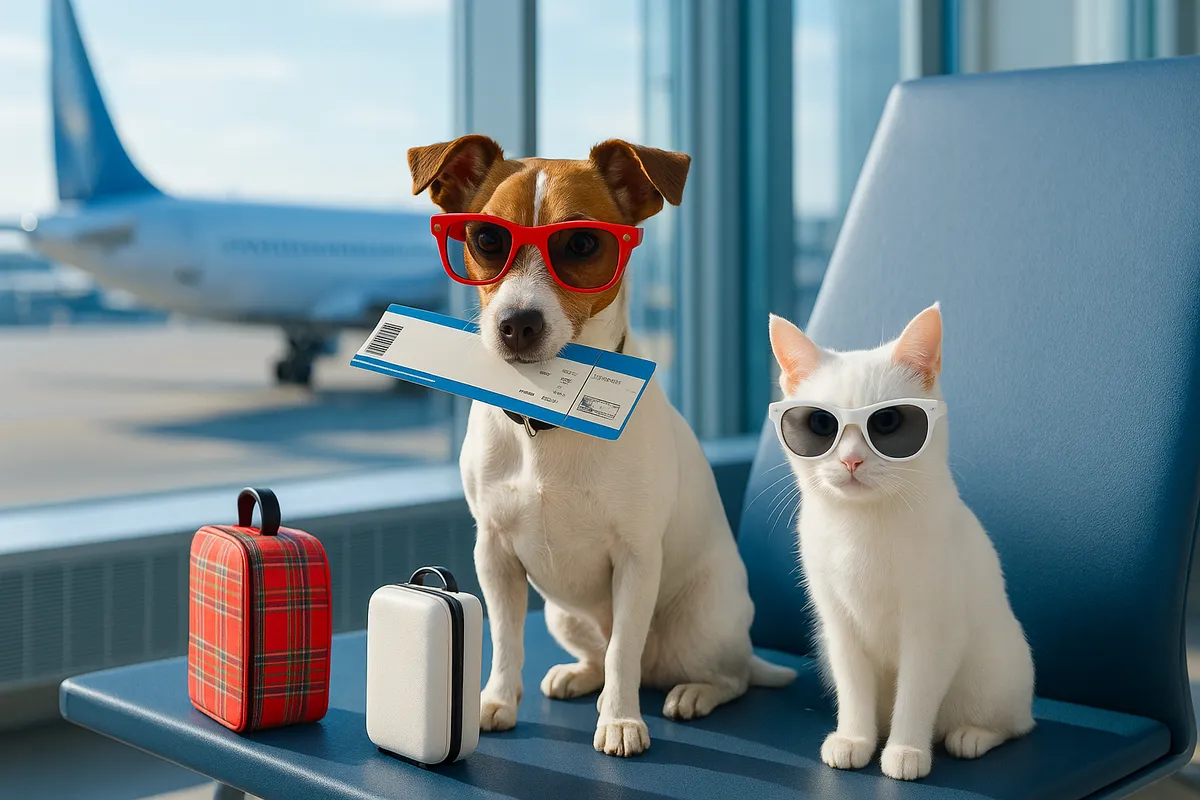Traveling with pets and the suitcase that saves every journey
- Saturday, May 03, 2025, 15:12 (GMT+7)
Traveling with pets and the suitcase that saves every journey
Not long ago, traveling with pets felt like a luxury few Vietnamese could afford. But as animal-loving lifestyles have become more popular and emotional bonds with pets grow stronger, the idea of hitting the road is no longer just for humans. Dogs, cats, rabbits, birds, and even hedgehogs have started to become true travel companions. However, for any trip with a pet to go smoothly, love alone is not enough. Owners must be well informed, fully prepared, and mentally ready for unexpected turns along the way. Real stories from travelers prove that overlooking the details can quickly turn a dream vacation into a stressful ordeal for both human and animal.
The first thing to understand is that not every place is pet friendly. Many hotels, resorts, and public transportation services still have restrictions or completely deny entry to animals. A survey among pet lovers revealed that over 60 percent of travelers were denied check-in even after booking, simply because they failed to read the accommodation’s policy. That is why researching in advance is absolutely essential. The most reliable way is to contact the hotel directly to confirm whether pets are allowed, which areas they can access, vaccination requirements, cleaning fees, or any size limitations.
When flying, the rules become even stricter. Most domestic airlines in Vietnam do not allow pets in the cabin and only accept them as checked baggage. This means the pet owner must provide a transport crate that meets specific standards: proper ventilation, secure locking, and leak resistance. Additionally, pets must have up-to-date vaccination records, especially for rabies, along with a veterinary health certificate issued by local authorities. Many people realize they are missing one of these documents only when they arrive at the airport, leading to cancelled flights or emergency pet drop-offs with family members.
Even choosing the right travel crate is a challenge of its own. If the crate is too small, the pet may panic. If it is too large, the airline may reject it. Experienced travelers recommend using hard plastic crates with non-slip bases, lined trays, and sturdy locks. Avoid foldable or soft fabric crates. It is also crucial to let your pet get familiar with the crate at least a week before departure. Let them eat, sleep, and play inside so it becomes a safe, familiar space.
Other forms of transport such as intercity buses, trains, or private cars each have their own policies. Buses rarely accept pets unless they are small and contained. Trains are more lenient but still require advance booking and a veterinary certificate. Many travelers prefer to drive, as it offers better control. On long drives, make sure to schedule regular stops so your pet can relieve itself, eat, and stretch. A tip not many know is to place a pet diaper or litter tray in the car to reduce stress and mess.
One common misconception is that pets only need food and sleep. In reality, they are just as vulnerable to motion sickness, heatstroke, and anxiety as humans. Dogs may pant, lick their lips, or bark more than usual. Cats often hide in corners or refuse to eat. To help them cope, feed your pet at least three hours before departure, avoid overfeeding, bring clean water, wipes, and vet-recommended motion sickness medicine. A piece of clothing with your scent can have a calming effect and make them feel secure.
The destination matters just as much as the journey. Nature-based stays with fewer vehicles and open spaces for pets to roam are often far better than luxury hotels with strict rules. Many homestays, farmstays, and campsites in places like Da Lat, Ba Vi, Phu Quoc, or Hoi An now proudly advertise themselves as pet friendly. Still, never assume too much. Even places with pet friendly signs may only allow pets in outdoor areas or restrict access to certain zones. Bringing your own mat, blanket, or portable bed is a sign of respect and helps keep the space clean.
Another important but sensitive issue is cleaning up after your pet in public. This is not just about personal image but also reflects the broader culture of responsible travel. Always carry small plastic bags, disposable wipes, or a mini shovel. Teaching your pet to relieve itself in designated spots before the trip is essential if you want to avoid judgmental looks.
Veteran pet travelers often recommend creating a special travel notebook for your furry friend. Include health records, dietary habits, your vet’s contact number, packing lists, and even local clinics at your destination. Some go a step further by attaching an AirTag or GPS tracker to their pet’s collar. Small details like these have helped many reunite with lost pets in crowded places within hours.
Lastly, the emotional connection cannot be ignored. Your energy directly affects your pet. If you are anxious, disoriented, or overwhelmed, your pet will sense it and mirror your behavior. The best approach is to stay calm, use your familiar voice often, pet them gently, and offer praise when needed. Always remember, for your pet, just being by your side already makes the journey a wonderful adventure.
Traveling with pets is more than just moving from one place to another. It is a powerful test of responsibility, knowledge, and deep emotional connection. With the right preparation, it transforms from a challenge into one of the most unforgettable memories of your life.

 CHECKIN.VN
CHECKIN.VN








Share on